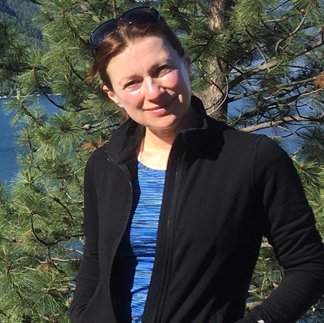Joscelyn

My message to women who have dense breast tissue is to ensure your health care team is aware of the information on this website. In my case, a screening mammogram found cancer. However, that mammogram, as well as follow up imaging – tomosynthesis, magnification views, and ultrasounds – failed to identify a second invasive tumour.
My breast cancer surgeon, a highly regarded expert in Vancouver, was evidently not familiar with the research around breast density. In keeping with what is apparently the standard process in Vancouver, she did not discuss breast density with me, and scheduled me for a lumpectomy after my core biopsy confirmed invasive ductal carcinoma. She did not schedule any further imaging, such as a pre-surgical MRI. Luckily for me, prior to the scheduled lumpectomy, a stereotactic biopsy of DCIS that was also found on the screening mammogram showed a grade and pattern that required excision, so I was forced to have a total mastectomy instead of breast conserving lumpectomy.
The pathology report on the mastectomy found a second invasive ductal carcinoma, hidden by the density of my breast tissue prior to my surgery. If I had not had the DCIS, I would have had a lumpectomy, and the second tumour would have been left in my breast, hidden for who knows how long, and possibly further obscured by scarring from a lumpectomy.
There is no breast cancer in my family. I wasn’t aware I had dense breasts, and I wasn’t aware of the risk associated with density. If I had been aware, I could have made changes to my lifestyle to reduce my risk of breast cancer (avoided prolonged use of hormonal birth control pills, avoided alcohol, increased exercise, etc.). I suspect my cancer could have been found earlier through ultrasound supplementing the previous mammograms I had (which I had been having through my 40’s), and if it had been found earlier, my treatment would have been vastly reduced.
Surely earlier detection would save health care costs and costs due to time lost from work. I endured surgeries (3), chemotherapy, a year of targeted therapy with trastuzumab infusions every 3 weeks, radiation therapy, and now, ovarian suppression and aromatase inhibitor therapy for a minimum of five years, probably longer for the aromatase inhibitors. Additionally, after my treatments had begun, I had a CT scan to rule out brain metastasis, numerous ultrasounds of my liver as well as an MRI and CT to rule out liver metastasis, a bone scan to rule out bone metastasis, and finally, after all that – an MRI of my left breast after repeated ultrasounds could not image a palpable lump due to high density in my left breast. As a result of my reconstruction, I will need MRI’s every 2 years to confirm no silicone leakage from the implant, and when I am about 60 the implant will need to be replaced. There are experts who say supplemental ultrasounds will not save health care costs but it’s difficult to fathom how they could be correct when I consider my own experience.
Thankfully I’m cancer free now, and happy to spread the word on breast density. To the people who say that telling women their breast density will cause unnecessary anxiety, I counter this:
About 60% of women don’t have dense tissue, and for them, being advised of their lack of density will increase their confidence in the accuracy of their mammograms. For the women who do have dense tissue, knowing about it gives us the choice to reduce other risk factors, and to be vigilant so that cancer that is disguised by density can be detected as early as possible.
